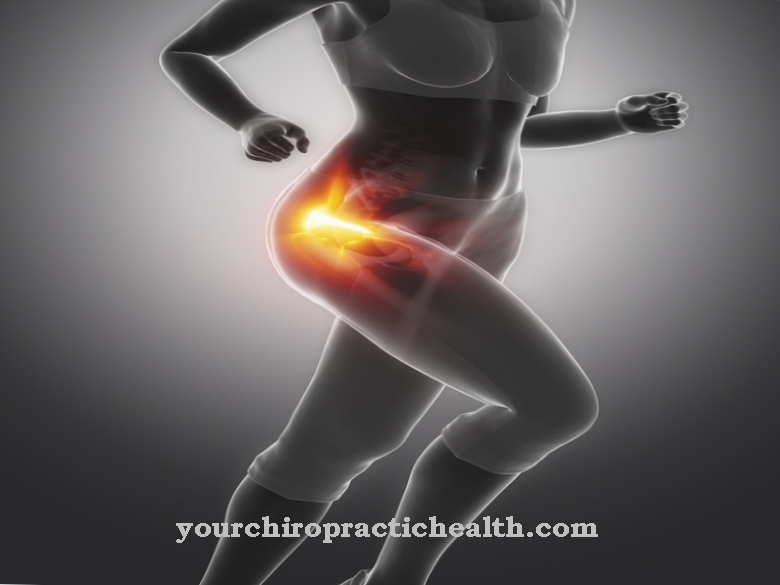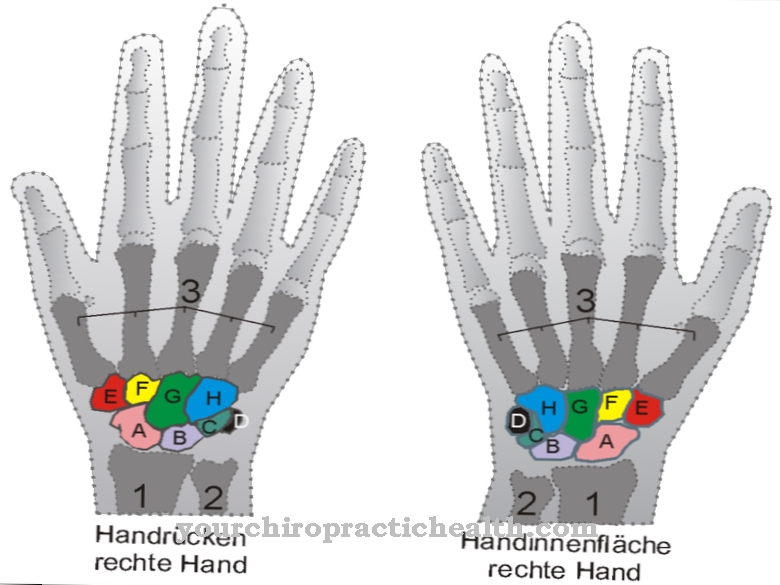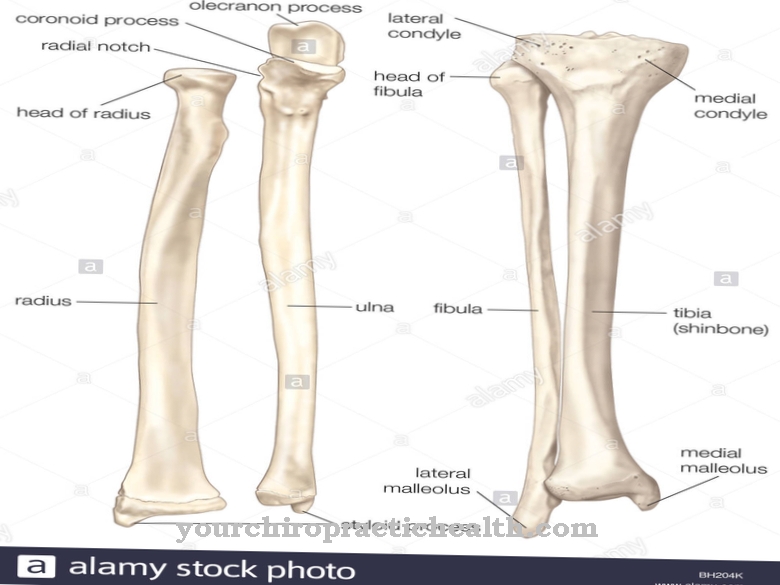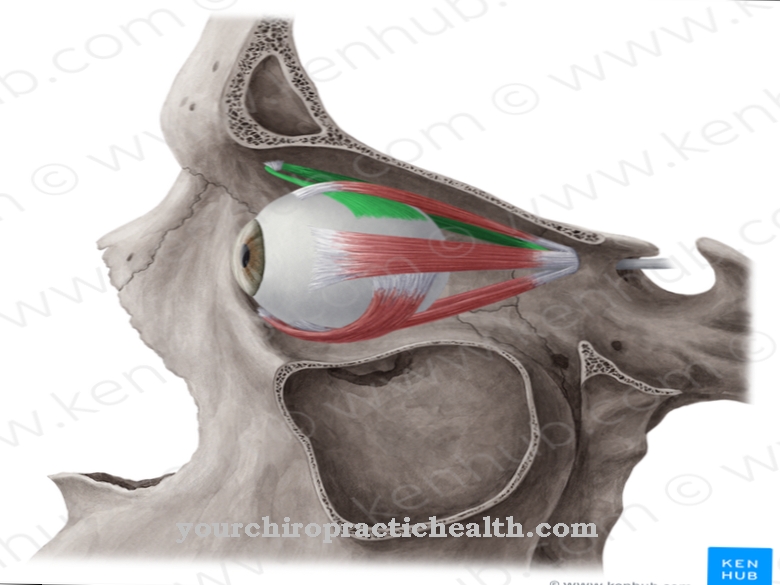Of the Nucleus accumbens is a relatively small part in the brain. It establishes a connection between the putamen and the caudate nucleus. Its main task is to regulate the reward system.
What is nucleus accumbens?
The nucleus accumbens is assigned to the mesolimbic system. The mesolimbic system is the reward system for positive stimuli. In it, positive emotions are localized and identified by external stimuli.
Corresponding reactions to the stimuli are planned and carried out in this brain region. The triggering stimuli can be based on experienced events, but can also be triggered by the ingestion of substances. For this reason, the nucleus accumbus is considered to be the region that plays an essential role in the development of an addiction.
The nucleus accumbens is part of the putamen. The putamen has an important function in controlling voluntary motor skills. Together with the caudate nucleus, the plutamen forms the striatum. The striatum belongs to the basal ganglia. These take over part of the motor, cognitive and limbic functions. The nucleus accumbens is a section of this region that translates motivational projects into action. The perceived emotion is transformed into a so-called locomotion through the influence of the nucleus accumbens. The nucleus accumbens is thus the instance that represents the transition from the motivational system to the activation system.
Anatomy & structure
The nucleus accumbens is the inner core area of the telencephalon. This is the cerebrum. The nucleus accumbens is part of the corpus striatum. It is a nucleus in the basal ganglia in which a group of endbrain and diencephalon nuclei are located.
The nucleus accumbens forms a small region in the ventrorostral area of the striatum. The striatum is a switching point in the extrapyramidal motor system. The nucleus accumbens is the area where the caudate nucleus and plutamen fuse together. Its fiber connection is similar to that of the rest of the striatum.
In the limbic system, it is characterized by a particularly afferent fiber structure. For this reason, this part of the basal ganglia is a special relay point for the implementation of motivation and emotion. The nucleus accumbens is thus a link between the basal ganglia and the limbic or psychomotor system. The nucleus accumbens contains dopamine receptors of type D2. These receptors receive signals from the neurotransmitter dopamine. This has an exciting effect.
Function & tasks
The nucleus accumbens plays an important role in social behavior. Functionally, the nucleus accumbens represents a switching point between the emotional and locomotor system. This means that the perceived emotions produce actions that are regulated by the nucleus accumbens.
The dopamine receptors present in the nucleus accumbens trigger positive feelings. These include feelings of happiness, a sense of achievement or euphoria. Substances such as opiates or amphetamines also act on the receptors and trigger the same positive emotions. The synaptic transmission therefore works with both experienced and artificially induced emotions. The nucleus accumbens represents the reward center. It thus plays an important role in classical conditioning. This includes learning simple stimulus-response patterns. Conditioning causes salivation when looking at food, for example.
The nucleus accumbens is the region in the brain in which the development of addiction is located. This can be an addiction to substances like cocaine, amphetamines or opiates. But the addiction to milder substances such as tobacco or nasal spray also arises in the nucleus accumbens.
Efferents draw from the nucleus accumbens into the limbic system and the hypothalamus. The incoming information is processed cognitively and psychologically in this brain region. The processing causes the vegetative response of the feeling of happiness.
You can find your medication here
➔ Medicines against memory disorders and forgetfulnessDiseases
Lesions and damage to the nucleus accumbens have a direct impact on the perception of positive feelings resulting from reward. Impairments can arise from cerebral haemorrhage, inflammation or after accidents. Damage to the nucleus accumbens is also possible after surgical interventions or in the case of tumor diseases.
The release of so-called feelings of happiness can no longer be regulated by feedback mechanisms in lesions of the nucleus accumbens. The D2 type dopamine receptor mediates positive and negative symptoms of schizophrenia. Thus all diseases caused by schizophrenia are influenced by the nucleus accumbens.
Nucleus accumbens dysfunction can adversely affect the functionality of the reward system. This means that dysfunction can have an important influence on diseases such as depression. The illness can worsen or episodes of depression can be triggered.
Bipolar affective disorder is characterized by a disturbed experience of the emotions. Sick people suffer from an interplay of positive and negative feelings. The nucleus accumbens plays a crucial role here. Its influence can weaken or intensify the experience of emotions. If the functional activity of the nucleus accumbens is restricted, this can make it impossible to learn classical conditioning. This limits the ability to react to stimuli. Many anxiety disorders are stored in the brain through classic conditioning. Damage to the nucleus accumbens can have the effect of minimizing a previously learned experience of fear. The fear conditioning must have taken place before the lesion of the nucleus accumbens.
An addiction disorder is significantly influenced by the activity of the nucleus accumbens. This is a chronic disease in which a permanent increase in the dopamine level causes insensitivity to the respective substance. Withdrawal of the substance leads to severe withdrawal symptoms.

























.jpg)

.jpg)
